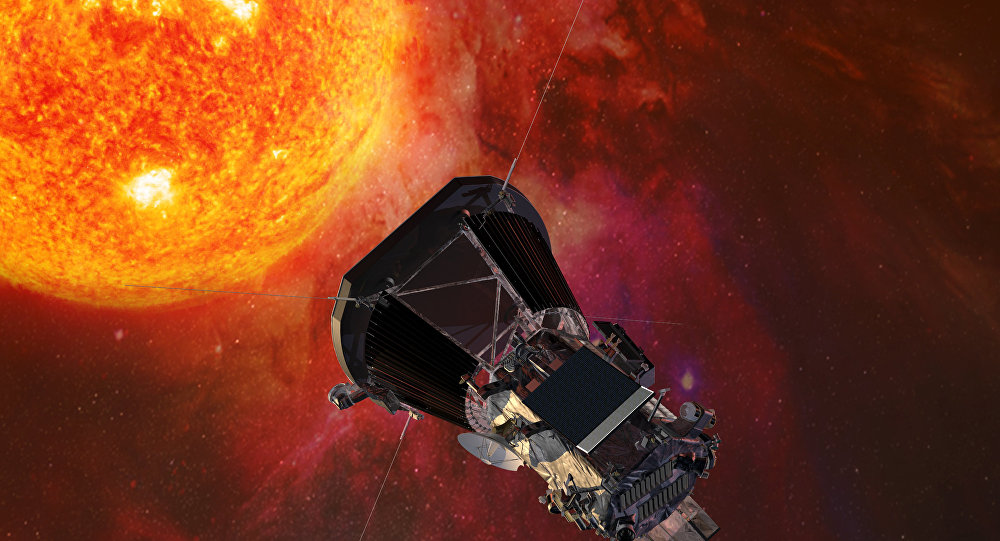NASA Spacecraft Captures New Image of Earth En Route to Venus (PHOTO)

US' National Aeronautics and Space Administration (NASA) released a new photo this week that was captured by the Parker Solar Probe as it made its way toward Venus.
The photo, snapped by the Wide-Field Imager for Solar Probe (WISPR) instrument, is made up of the images that WISPR's two telescopes captured at the same time. Considering that both telescopes are pointed at slightly different angles, the pair offered different fields of view.
© COURTESY OF NASA/NAVAL RESEARCH LABORATORY/PARKER SOLAR PROBE
The view from Parker Solar Probe's WISPR instrument on Sept. 25, 2018, shows Earth, the bright sphere near the middle of the right-hand panel. The elongated mark toward the bottom of the panel is a lens reflection from the WISPR instrument.
Earth is the bright, round object appearing in the right panel of the photo. WISPR took the picture on September 25, 2018, a little more than a month after the probe was launched from Cape Canaveral on August 12 atop a United Launch Alliance Delta IV Heavy rocket.
According to NASA, the Parker Solar Probe was roughly 27 million miles from Earth when it captured the image. Interestingly enough, scientists determined that if one were to zoom in on the bright ball that is Earth, one would be able to see "a slight bulge," which turned out to be moon.
© COURTESY OF NASA/NAVAL RESEARCH LABORATORY/PARKER SOLAR PROBE
A close-up of Earth from WISPR's Sept. 25, 2018, image shows what appears to be a bulge on our planet’s right side — this is the Moon.
The space probe, costing a hefty $1.5 billion, is part of a seven-year mission to help researchers get a better understanding of the sun's corona and how solar winds are formed.
© AP PHOTO/ NASA
Ice, Ice Baby: Second Strange Rectangular Iceberg Spotted in Antarctica (PHOTO)
"We're finally going to be able to answer questions about the corona and solar wind raised by Gene Parker in 1958 — using a spacecraft that bears his name — and I can't wait to find out what discoveries we make," said Nicola Fox, a project scientist at Johns Hopkins University's Applied Physics Laboratory. "The science will be remarkable."
Parker is expected to complete its first solar flyby sometime in early November at an estimated distance of 15 million miles from the sun.








